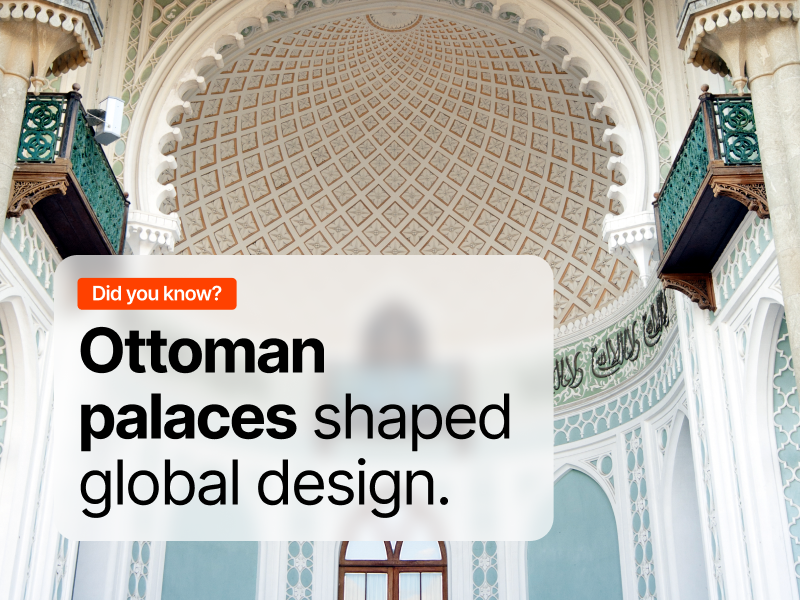Menu
11-12-13 June, 2026
EXPO CENTRE, SHARJAH United Arab Emirates
Menu
EXPO CENTRE, SHARJAH United Arab Emirates

Take a look around. That velvet cushion, arched mirror, carved wood screen, or the very “ottoman” footrest in your space? Not random. You’re living in an echo of imperial design. Ottoman palaces didn’t just build for themselves, rather, they built a visual language the world keeps borrowing and remixing.
The Ottoman sultans weren’t only rulers, they were tastemakers. Palaces like Topkapı, Dolmabahçe, and Beylerbeyi blended Islamic, Byzantine, Persian, and European forms to create grand statements in architecture and interior decor. Over time, this opulent aesthetics seeped into global design. As Sotheby’s Realty puts it, Ottoman motifs continue to echo in modern architecture, long after the empire’s fall. (Source: Sotheby Realty)
Inside those palaces, luxury wasn’t a sidenote. Interiors glowed with brocades, silk fabrics, mother-of-pearl inlays, mashrabiya screens and tilework. Ottoman interior decor was layered, sensory, and deeply symbolic. (Source: Mimari Expert)
Here’s a fun fact: the furniture piece called the “ottoman” owes its name to the empire.
Originally a low wooden platform piled with cushions, it wrapped around corners of a room.
Over time, it evolved, shrank, and traveled—making a name for itself in Europe during the late 18th century. (Source: Wikipedia)
That impulse—to make something functional also beautiful—is at the heart of Ottoman design and exactly why the form caught on so widely.
In the 17th–18th centuries, Europe fell deep for the “exotic” Ottoman aesthetic. The fascination went beyond imports. The movement known as Turquerie wove Ottoman motifs into paintings, interior schemes, fashion, and more. Europeans adopted domes, floral arabesques, and bright Turkish textiles, even when they never visited Istanbul. (Source: Wikipedia; Daily Sabah; Pera Museum)
So that over-the-top wallpaper or those dangling tassels? They may well trace back to a European fantasy of Ottoman opulence.
Fast forward to today, and the Ottoman aesthetic is everywhere, not as pastiche, but as inspiration.
It’s not about copying history but more about feeling its pulse in a new context.
Design houses, furniture brands, and interior studios: the Ottoman influence is your secret weapon. It’s classic enough to signify luxury, yet flexible enough to be reimagined. Think:
When the world seeks a blend of identity, history, and elegance, Ottoman-inflected design is a bridge, not just a throwback.
Your Home, the Next Palace?
Yes, the Ottoman Empire technically ended in the early 20th century. But its aesthetic empire? That never faded. It quietly moved into living rooms across continents and continues shaping what “luxury” looks like.
From your ottoman footstool to an arched mirror, the influence is living, evolving, and ready for revival.
Stay ahead of the curve with The Hive Times, your ultimate source for the latest industry buzz, stylish innovations, and trendsetting designs!
6th Edition 11-12-13 June, 2026
10:00 AM to 06:00 PM Expo Centre, Sharjah, United Arab Emirates
Largest Furniture
Trade Fair for the
Middle East & Africa




WhatsApp us